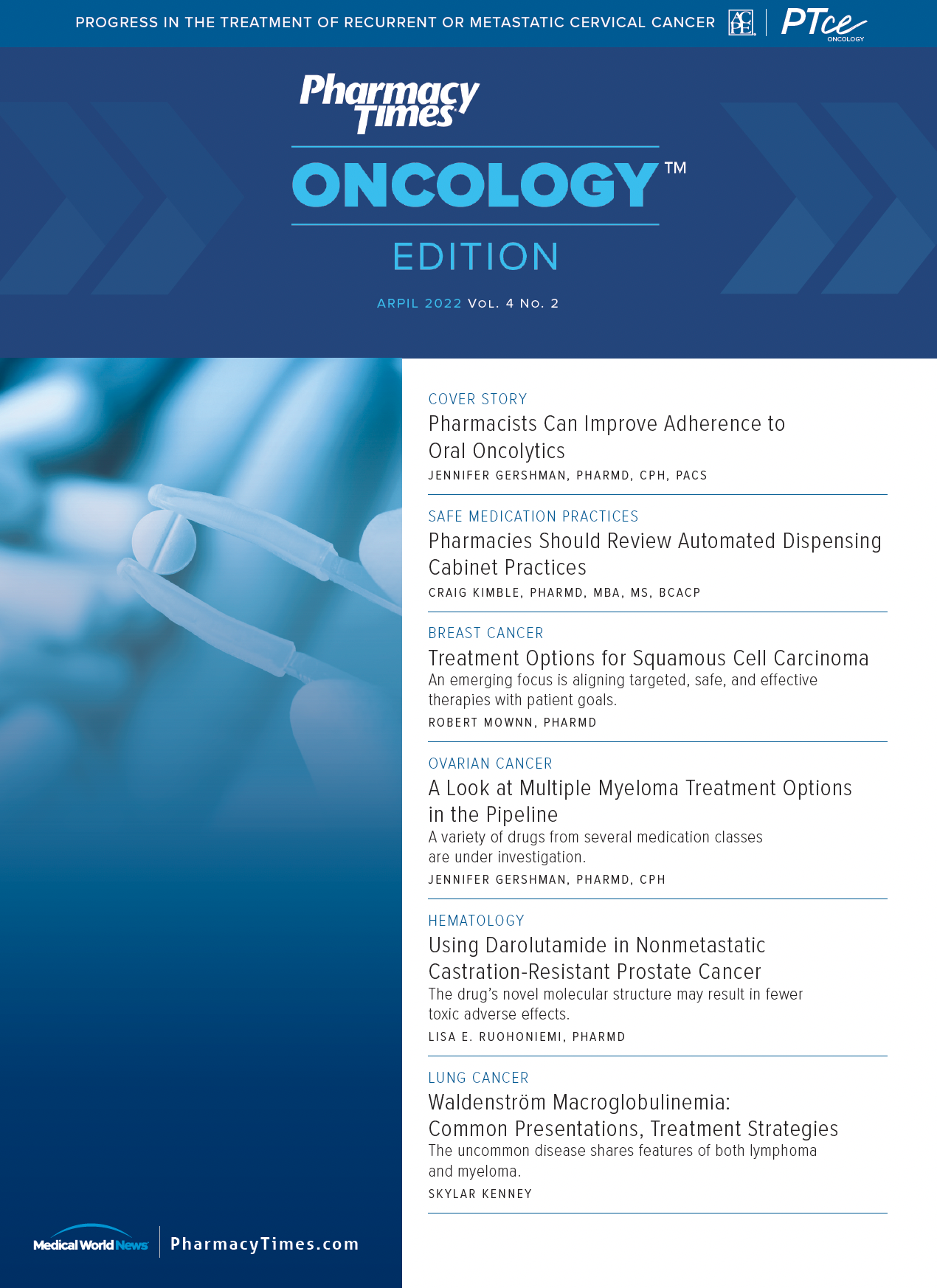Publication
Article
Pharmacy Practice in Focus: Oncology
Treatment for Myelodysplastic Syndromes: Who, When, and What
Attendees of this live virtual program learned the latest and greatest in a presentation from 2 expert oncology pharmacists.
Attendees of this live virtual program learned the latest and greatest in a presentation titled Beyond Watch and Wait: Advances in Therapeutic and Supportive Care for Patients With Lower-risk Myelodysplastic Syndromes from 2 expert oncology pharmacists.
Sarah E. Stump, PharmD, BCPS, BCOP, began the session with a review of myelodysplastic syndromes (MDS) including epidemiology, risk factors, diagnosis, and risk assessment. She illustrated treatment decisions based on lower-risk and higher-risk MDS categories guided by the Revised International Prognostic Scoring System (IPSS-R). She explained that patients who do not have symptoms can be observed; however, patients with symptomatic anemia or other cytopenias are candidates for treatment. Dr Stump advised that patients with higher-risk MDS may be offered curative therapy with an allogeneic stem cell transplant. She noted few patients are eligible for this intensive therapy and most patients with higher-risk MDS are managed with hypomethylating agents (HMAs) or newer investigative strategies.
She then illustrated options for lower-risk MDS, including lenalidomide for patients with an isolated chromosome 5q deletion; epoetin alfa for patients with anemia and a serum erythropoietin level less than 500 units/L; immunosuppressive therapy for a subgroup of patients with a high likelihood of response to immunosuppressive therapy; and HMAs for patients with multiple cytopenias. Dr Stump wrapped up the first half of the session describing luspatercept, a new option for patients who require two or more red blood cell (RBC) transfusions over 8 weeks after failing an erythropoiesis-stimulating agent; for very low- to intermediate-risk MDS with ring sideroblasts or with myelodysplastic/myeloproliferative neoplasm with ring sideroblasts and thrombocytosis.
Kristen McCullough, PharmD, BCPS, BCOP, began the second half of the presentation by talking about iron overload in patients with MDS. She cautioned there are nearly a dozen different guidelines for the use of iron chelation therapy in this patient population. Based on the National Comprehensive Cancer Network guidelines, iron chelation is recom- mended for patients with IPSS-R low- and intermediate-1 risk MDS with a history of more than 20 to 30 RBC transfusions, when the ferritin is above 2500 ng/mL using either deferasirox or deferoxamine. She outlined strategies for dosing, administration, and monitoring iron chelation therapy. Dr McCullough shifted to focus on supportive care strategies and clinical pearls. She wrapped up by emphasizing the benefits of pharmacist-based medication education in hematology/oncology, including:
↑ Patient satisfaction
↑ Patient learning outcomes
↑ Adherence
↑ Revenue
↓ Errors
↓ Severe adverse effects
Sarah E. Stump, PharmD, BCPS, BCOP, explained, “In clinical practice, a cutoff IPSS-R score of 3.5 commonly distinguishes between lower-risk MDS, which accounts for approximately two-thirds of all cases at diagnosis and higher-risk MDS, which accounts for approximately one-third of all cases.”
Kristen McCullough, PharmD, BCPS, BCOP, stated, “Pharmacists can use collaborative practice agreements to follow patients on oral chemotherapies, adjust or hold doses based on laboratory findings, and also facilitate medication refills.”







